Thuja Sankist is an evergreen coniferous tree that belongs to the Cypress family. The natural habitat is the eastern territories of North America, where its height reaches 20 meters. This variety is sometimes called "northern white cedar". By the way, the English word Sunkist means "a bundle of the sun".
In 1753, the Swedish natural scientist, botanist, physician Karl Linnaeus first described the western thuja and gave it a biological name. Its translation from Greek sounds like "sacrificial incense".
Description of Tui Sunkist
The coniferous tree has a conical crown. Plant height 3-5 m, width 1.5 m. The branches are dense, branched, very decorative, arranged vertically. Shoots are slightly twisted. Their shape is reminiscent of shells.
The needles are scaly, dense, glossy, and have a pleasant pine scent. In spring it is lemon-colored, in summer it is bright golden, in autumn, in winter it takes on a bronze tint.
The tree grows slowly. The annual growth of shoots in height / width is 5 cm. A ten-year-old specimen is 2 m tall.
Fruits - cones, round, brown (diameter 1 cm). The young plant has a red-brown bark. Then it turns gray-brown. The roots are compact, shallow.
This variety is considered undemanding to the characteristics of the soil, but prefers fertile, loose, moist, but not swampy loams. Thuja can grow on acidic, alkaline (no lime) soils. You should choose for the plant a sunny or light shade area. It is preferable that it be protected from the winds. If the thuja western Sunkist is planted in the shade, its crown will become loose, green, and lose its golden color.
The tree is distinguished by good frost resistance, wind resistance, and tolerates urban climatic conditions well. Thuja are planted, leaving a space of 0.5-0.6 m between them.
Landing
A coniferous plant is transplanted, keeping an earthen lump (or from a container). This method protects the root system from damage, as well as mycorrhizal fungus on the roots. It is very important for conifers. If the groundwater is close to the soil surface, drainage is arranged (crushed stone is poured in a layer of 10 - 20 cm).
Prepare soil mixture:
- sod land (2 parts);
- peat (1 part);
- sand (1 part).
The acceptable acidity level is pH 4.5-6. Add nitroammophoska (100 g / 1 adult specimen). It can be a mineral fertilizer (5 g / liter of soil). With heavy clay soil, crushed brick or crushed stone (20 cm) is placed on the bottom of the pit on the site. Sand is poured on top. Sandy loam soils do not need drainage.
Dig a landing hole (1.5 - 2 times more earth clod). Depth (60 - 80 cm). Fill with prepared earth.
Set the tree in the hole. You can add a root growth stimulant (Kornevin, Radifarm). The hole is covered with soil gradually (adding 20-30 cm). The root collar is not buried, it is left at the soil level. Tamped, watered. Mulch the near-trunk zone with peat or bark.
Care
A young seedling requires abundant frequent watering.In the first month after the thuja is planted, water it once a week (1 bucket of water / 1 plant.). If the weather is dry, hot - 2 times in 7 days (2 buckets of water / 1 tree). Sprinkling is also used.
In the following years, it is preferable to water once a week if the weather is dry. To keep the soil moist for a long time, the trunk circle is mulched with pine bark, a sliver (5-7 cm layer). When spring comes, water the plant abundantly. So it will wake up faster.
You can spray the seedling with Epin Stimulant 1 ampoule / 5L. water or Zircon 1 ml. / 10 l. water.
In spring (April - May) the plant is fed. Use nitroammophoska (30 - 40 g / m2). You can take any complex composition (Kemira-Universal 50 - 60 g / m2). In autumn (October) potash is added.
During the growing season, shallow loosening is performed (8 - 10 cm). Mulch with dry compost, peat, bark, etc.
Thuja Sunkist tolerates frost and cold very well. It is only necessary to tighten the crown tightly with a tape. This will keep her from wet snow.
Pruning is carried out in the spring. Sick, damaged, dry branches are removed. Form the crown.
Diseases, pests
Thuja western Sunkist can be affected by fungal diseases:
- fusarium;
- shute brown.
Sprayed with fungicides (Topsin, Hom). In April, they do preventive treatment with Bordeaux liquid (1%).
Sometimes the plant is attacked by aphids. Apply drugs Decis, Aktara. The treatment is carried out twice, taking a break of 7-10 days.
From the crown of thuja Sunkist, you can form all kinds of shapes. The plant is planted in containers, hedges are created from it. The tree looks good in single plantings, as well as group compositions.
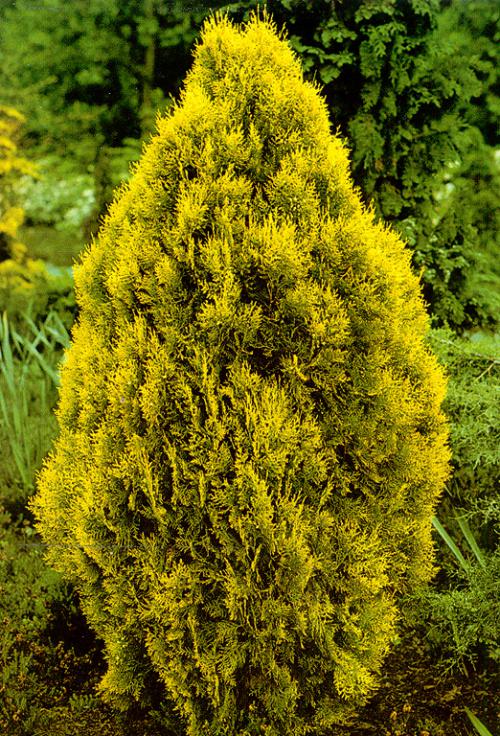
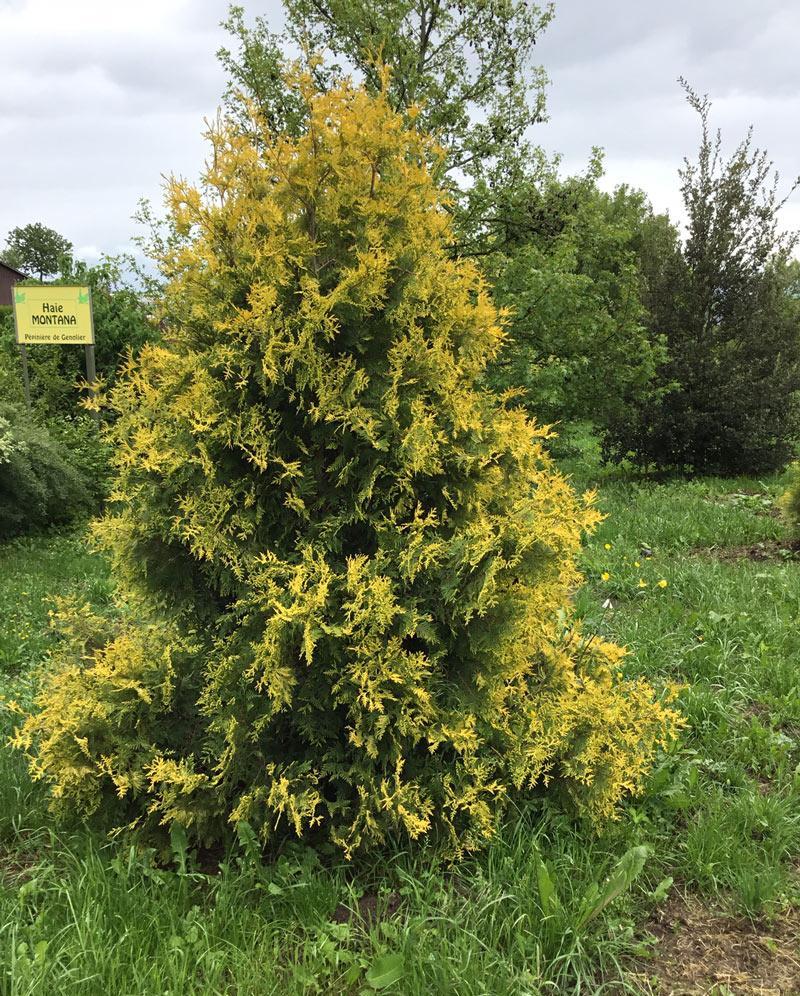
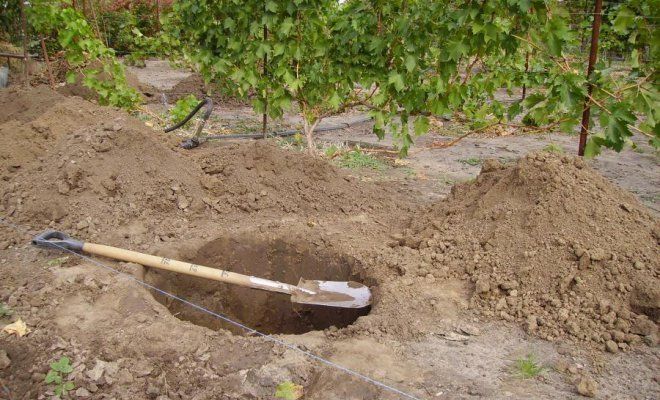
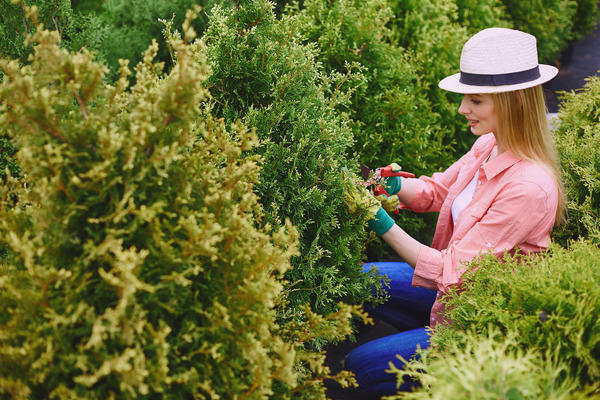
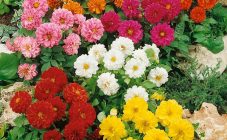
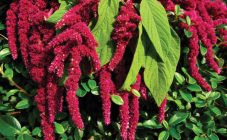
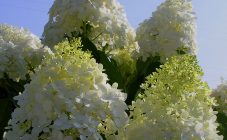
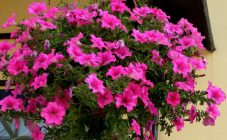
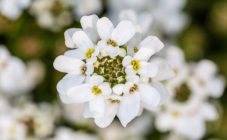
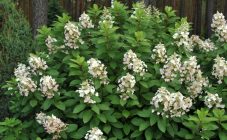







You have a mistake - the width of the thuja crown is 1.5 m, and it is recommended to plant them at a distance of 0.5-0.6 m from each other.